Northern California's Redwoods
Land of the Giants
Article Date: February, 2015
Article and Photography by Mark Quasius
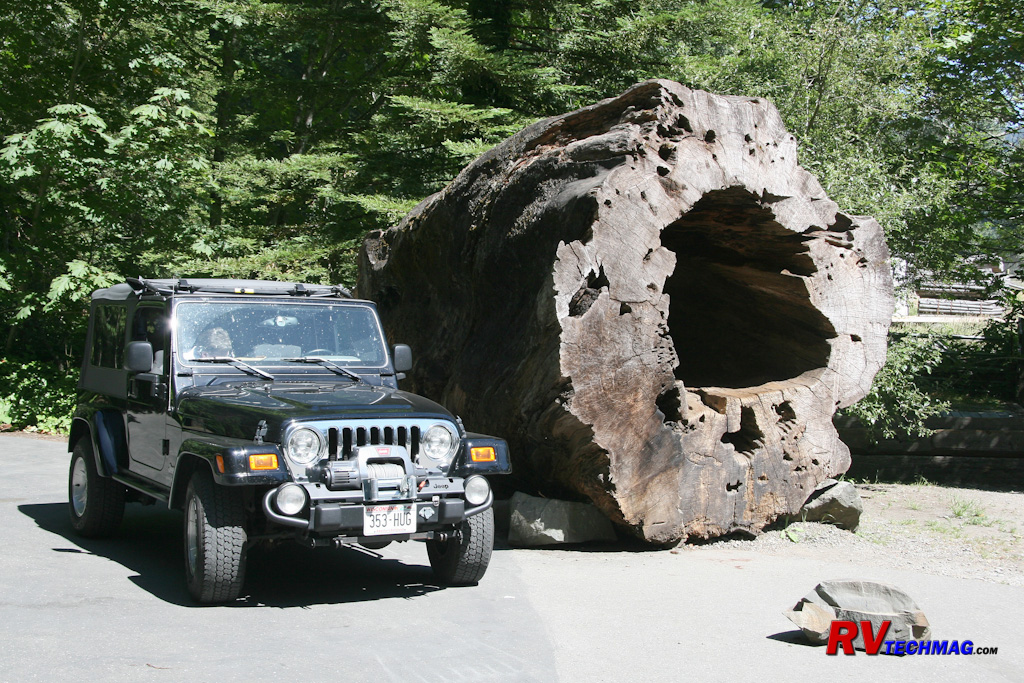
America has truly been blessed with many scenic wonders, from the frozen glaciers of Alaska to the parched sand of the
Mohave Desert, from the heights of the Rocky Mountains to the depths of Death Valley, amazing scenery is around every corner. California's
redwood trees are one of those awe-inspiring wonders. These tall sentinels reach up to 350 feet in height and 25 feet in diameter. This kind of
massive growth requires plenty of water, which why these giants thrive along the coastal plains of Northern California. Here, the moisture from
the Pacific Ocean meets up with the Sierra Nevadas and provides ideal growing conditions for these thirsty icons.
After extensive logging in the last portion of the 19th century, efforts were taken to protect some of the groves for the
enjoyment of future generations. Land was set aside that eventually became Redwoods National Park, which now consists of several distinct areas.
Jedediah Smith State Park, Prairie Creek Redwoods State Park, and Del Norte Redwoods State Park are jointly administered by both the National
Park Service and California's State Parks Department. To protect additional land in this scenic area, which extends from south of Eureka to
Crescent City at California's northern border, a number of state parks have been created, such as Fern Canyon State Park and Humboldt Redwoods
State Park.

The Simpson-Reed Trail in Jedediah Smith Redwoods passes through numerous groves of tall redwoods.
Eureka
Eureka is the perfect jumping off spot for any tour of the redwoods. Situated right where U.S. Highway 101 meets up with
the coast, it provides all of the services necessary for any RV traveler. The town's central location makes it a good choice for exploring the
redwood groves, both south of Eureka in Myers Flats and Humboldt Redwoods State Park, as well as continuing on up the coast to Crescent City, the
last city along the Redwoods Highway before you enter Oregon.
Eureka's natural harbor made it the perfect place for shipping. During its heyday, it was the shipping center for the
timber cut down from the nearby redwood groves. The original skid row, where the logs were slid down the street to waiting ships in the harbor
below, is still there, but it is now a paved street lined with shops. Today's harbor bustles with commercial fishing and pleasure craft, while
the restored downtown area is filled with excellent examples of Victorian-period architecture. A large number of lumber barons made their
fortunes in this industry, and you can still see some of their mansions today. You can't miss the three-story, fairy-tale-like Carson Mansion
topped with complex gables, cupolas, and turrets.
Eureka has a natural harbor framed by the northern Samoa Peninsula and the Humboldt Spit to the south. Samoa is accessed by
a bridge from the mainland, and at the southern tip is the Samoa Dunes State Recreational Area. A popular stop is the Samoa Cookhouse, a former
loggers' cookhouse now converted into a museum and period-inspired restaurant. The Cookhouse serves family style meals with a never-ending supply
of food, ensuring no visitor ever leaves hungry. The southern end of the harbor is Humboldt Bay, formed by the Humboldt Spit extending from the
south. This area is a National Wildlife Refuge Center, and many species of marine and shorebirds nest in protected areas surrounding the bay.
|

Hotel Carter is a typical example of the wonderful Victorian-style architecture found in Eureka's downtown.
|
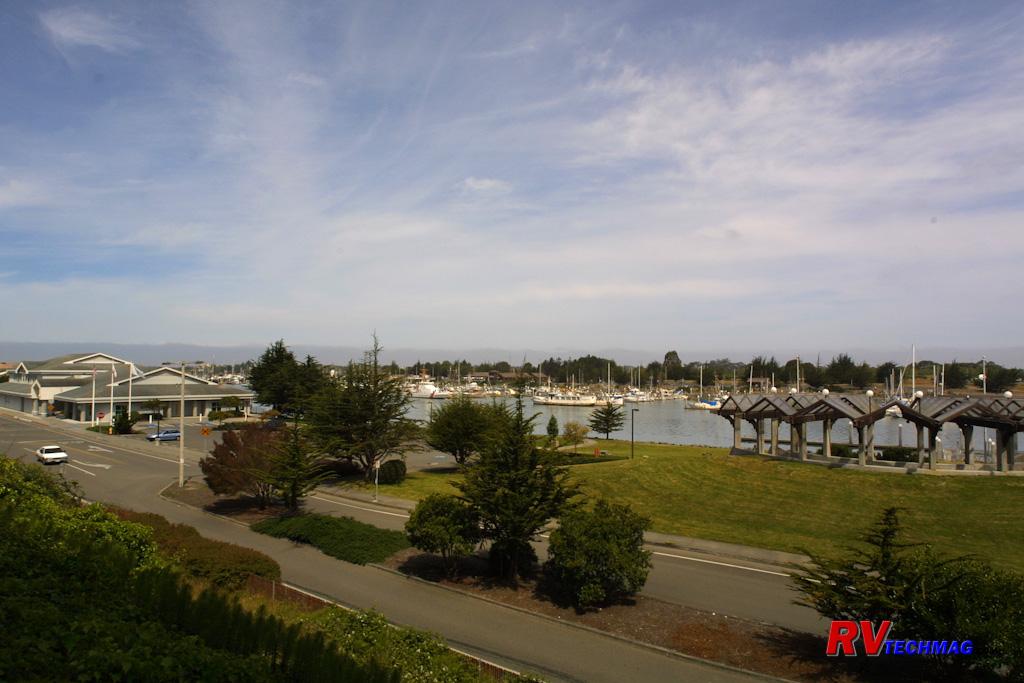
Eureka's harbor is host to a large marina of pleasure boats and fishing craft.
|
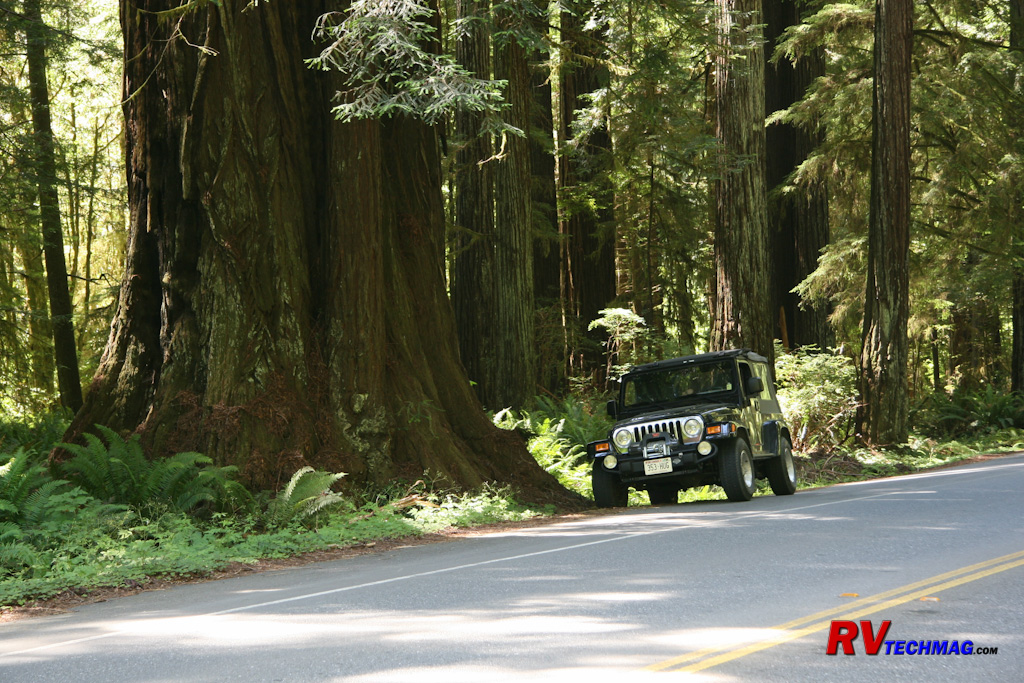
A large grove of redwoods lines the Avenue of the Giants south of Eureka.
|
South
U.S. Highway 101 continues south of Eureka and heads inland on its way to Garberville. A short drive south of Eureka is
the Avenue of the Giants. This scenic drive winds its way through groves of massive redwoods and is actually part of Humboldt Redwoods State
Park. Numerous exhibits and museums are found along this route, including information regarding the 1964 Christmas Flood. In December 1964,
a "Pineapple Express" weather event dumped tons of warm rain on this area, quickly melting the unusually abundant snow. The Eel River overflowed
and flooded the area around Myers Flat as high as 70 feet over the normal river level. It caused tremendous damage to local fish habitats and to
manmade structures, sweeping entire towns away.
North
Heading north as you leave Eureka, U.S. Highway 101 follows the coastline. At Orick, a scenic drive through the Ladybird
Johnson Grove brings you to a number of nature and hiking trails. Just north of Orick is Fern Canyon State Park, which you can access via a gravel
road that first climbs, then descends to the coastline. The road continues north on the narrow shelf between the steep cliffs to the east and the
beach to the west, passing through herds of Roosevelt Elk. At the road's end, a parking area marks the beginning of the hiking trail into the canyon.
Plank walkways allow you to cross the stream when entering the canyon, and the trail passes through verdant cliffs and fallen trees. Does this
canyon seem familiar? A large segment of the movie Jurassic Park 2: The Lost World was filmed in the canyon.
North of Fern Canyon, U.S. 101 continues to Crescent City, but you can take a more scenic route along the Nelson Drury Scenic
Parkway. This picturesque drive passes through Prairie Creek Redwoods State Park. A northerly drive along Coastal Drive affords inspiring views of the
rugged coastline. One interesting site on this drive is a World War II radar station that had been disguised to look like a farm from the ocean.
Eventually, the road passes Flint Rock Head at the mouth of the Klamath River and rejoins U.S. 101. Additional travel passes you through Del Norte
Coast Redwoods State Park on the way to Crescent City.
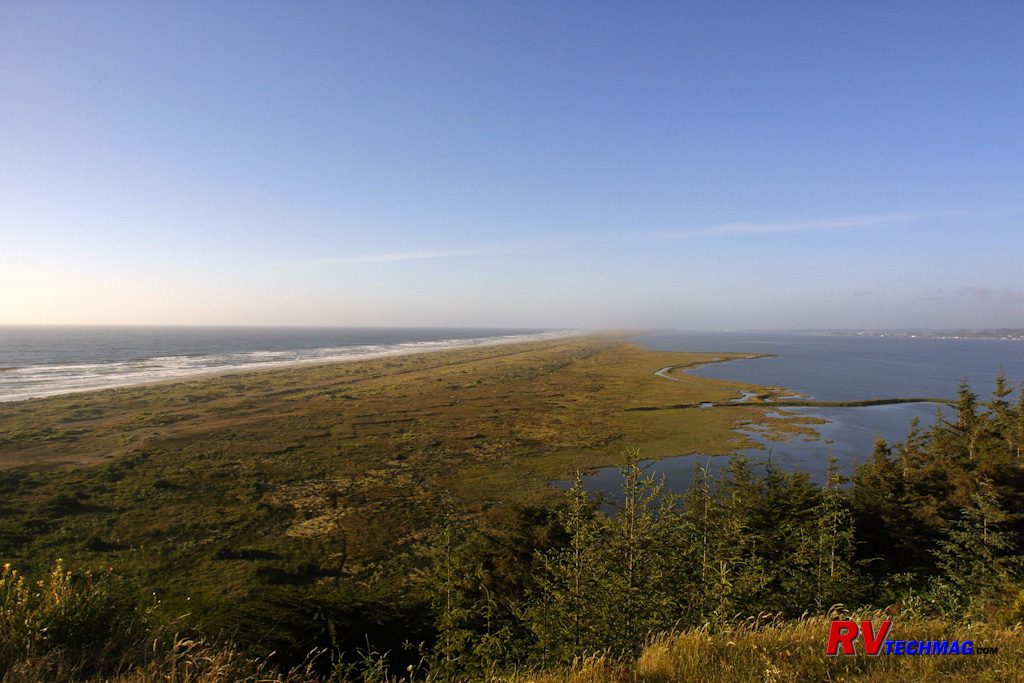
The Humboldt Spit borders Eureka's Humboldt Bay National Wildlife Refuge and is home for a large colony of shorebirds and egrets.
|
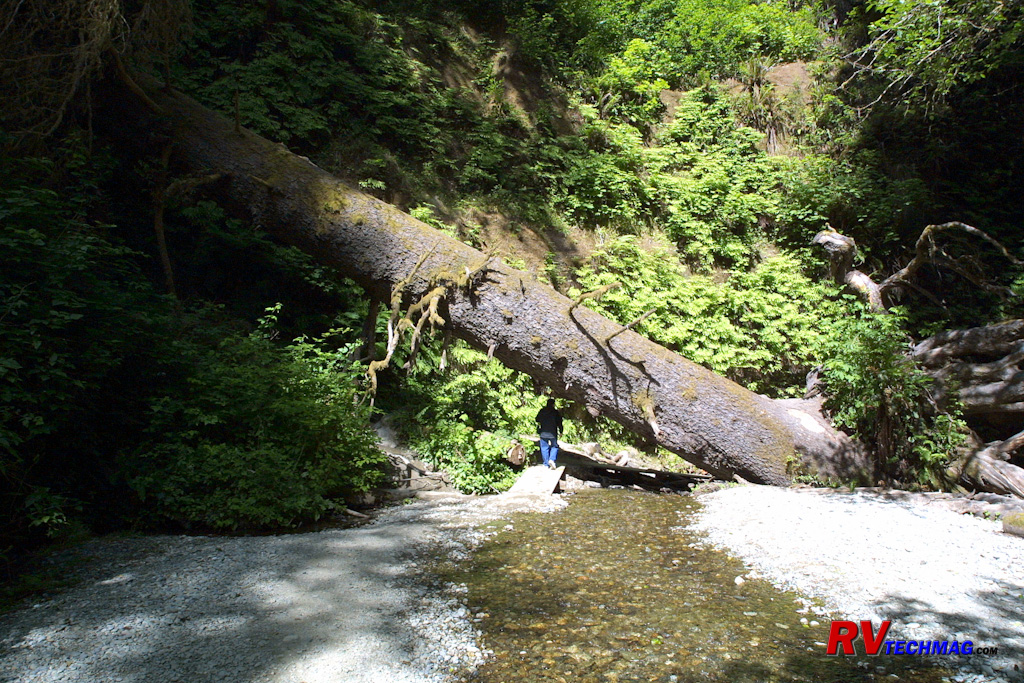
Fern Canyon proceeds from the Pacific Ocean shoreline into a canyon that decreases in size. It was popularized after it was used in
the second "Jurassic Park" movie.
|
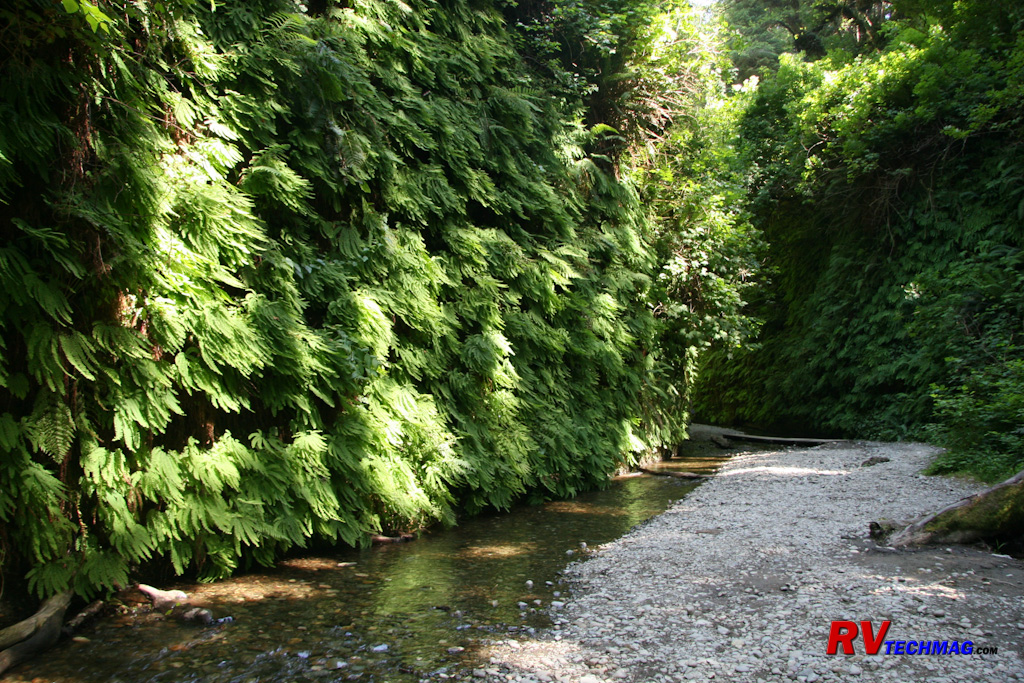
Fern Canyon.
|
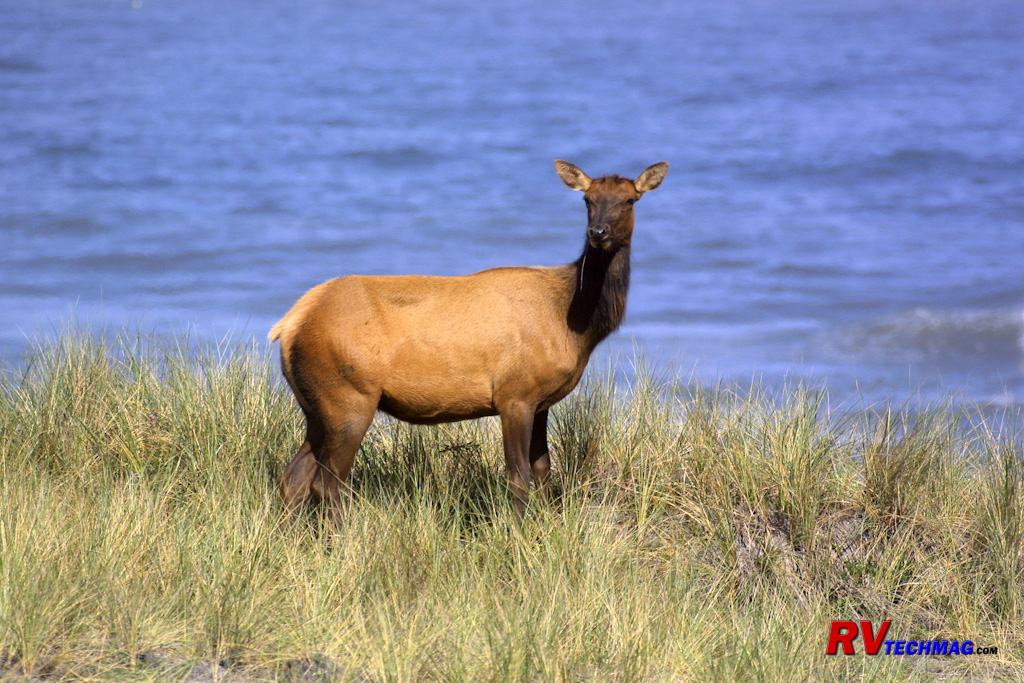
Roosevelt Elk are commonly seen along the coast in Fern Canyon State Park.
|
Crescent City
Crescent City is known for its beaches and nearby redwood groves. The tidal pools at Crescent Beach are filled with
starfish, mollusks, and other fascinating creatures. You'll find a marine-mammal rescue facility at the city park, where rescued sea lions
and other marine mammals are housed until nursed back to health.
Just north and east of the city, U.S. Highway 199 passes through Jedediah Smith Redwoods State Park, containing some
of the tallest trees in the Redwoods National Park complex. A wide selection of nature trails pass through various groves. These stately giants
tower over forest floors carpeted with ferns. Naturally, such dramatic beauty has attracted filmmakers. This unique landscape was used in a
number of movies, including scenes featuring the Ewok village and the speeder bike chase in Star Wars: Return of the Jedi. Also partially filmed
in Redwood National Park was E.T. the Extra-Terrestrial.
Camping facilities abound throughout the area, including primitive sites in some of the state parks to full-service RV
parks in and around Eureka, Crescent City, and Klamath. You're bound to find a spot that's perfect for you, so that you can soak in your
surroundings.
The entire 100-plus miles of the Redwood Highway is filled with breathtaking beauty. Each area is unique in what it has to offer. You'll appreciate
the natural beauty we have been blessed with in our country.
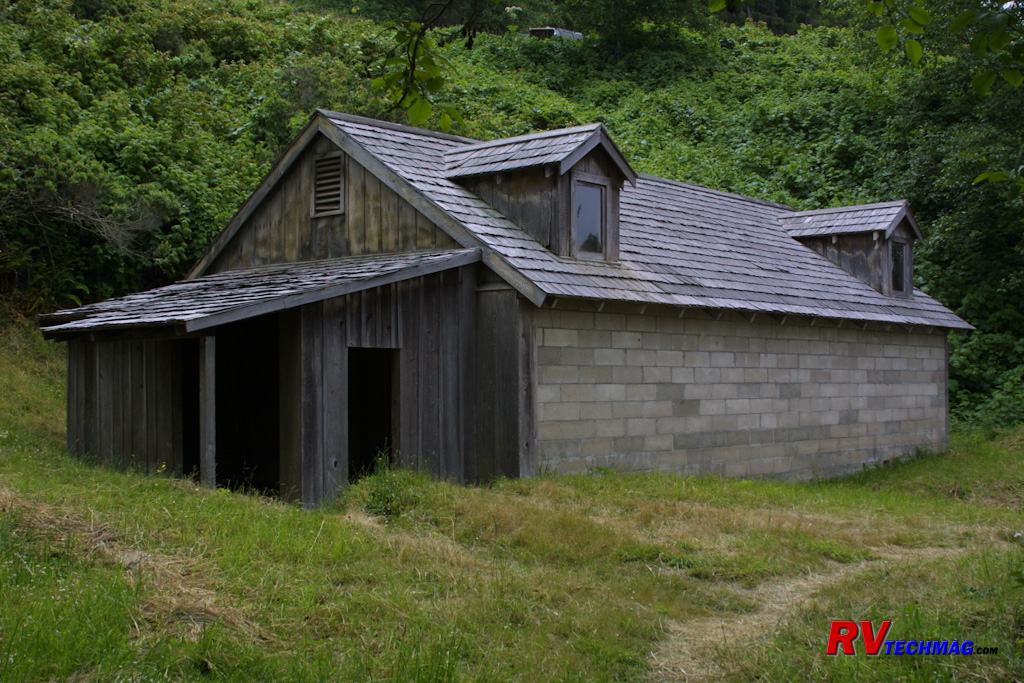
This site in Prairie Creek Redwoods is part of a World War II radar station disguised to look like a farm.
|
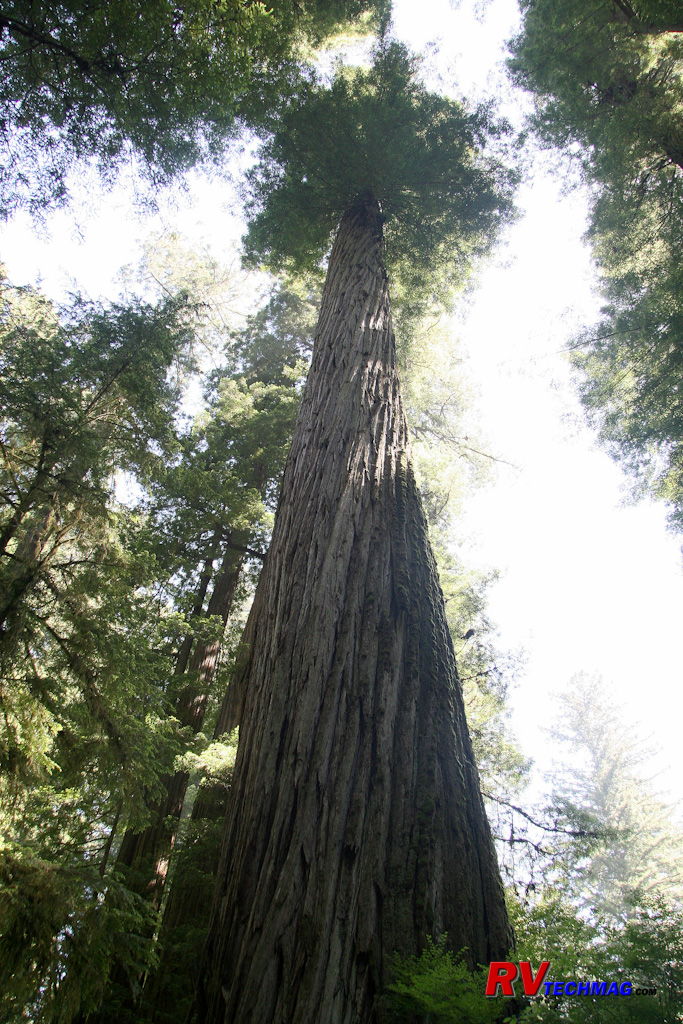
Redwoods can tower up to 350 feet in height. You'll see long, straight trunks until the tops reach the sunlight far above.
|
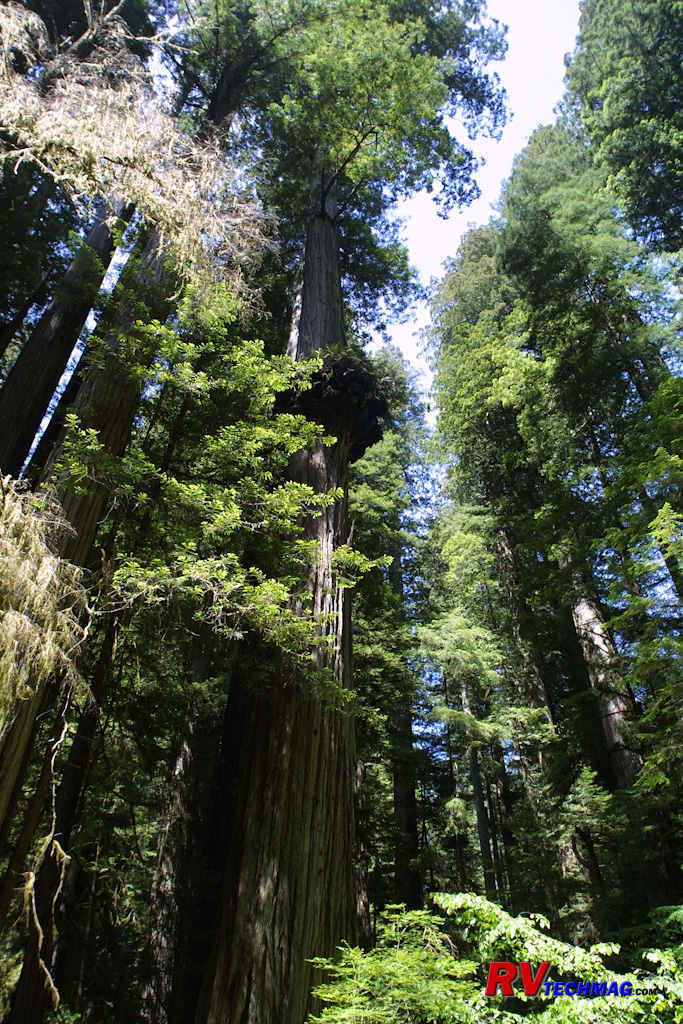
The tall sentinels of Jedediah Smith State Park.
|
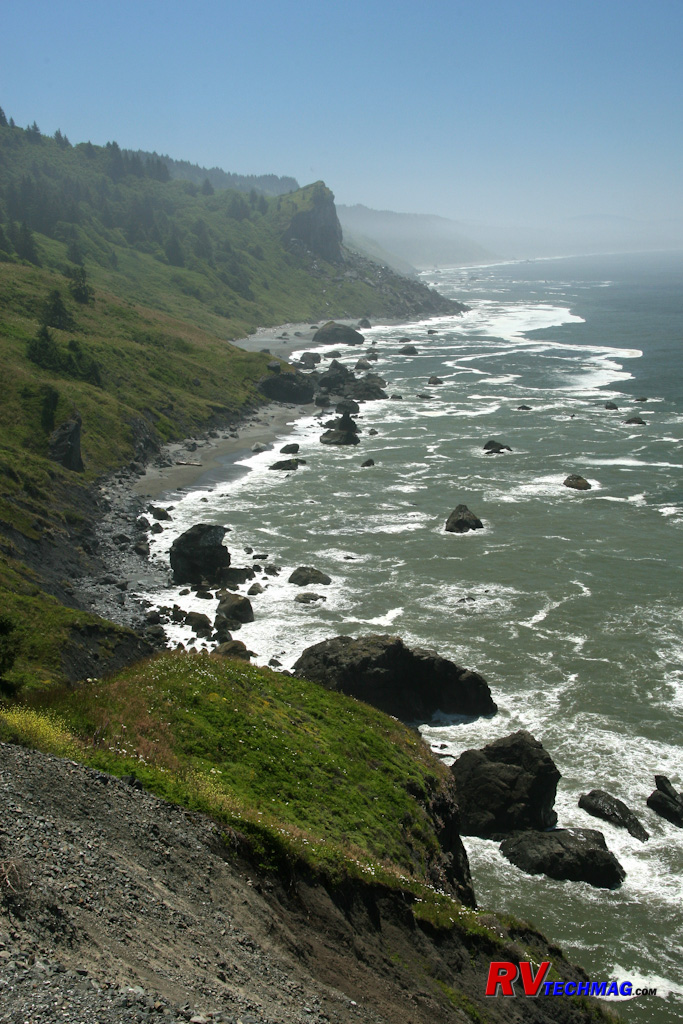
The rugged shoreline of Prairie Creek Redwoods State Park yields to steep slopes ideal for redwood growth.
|
|
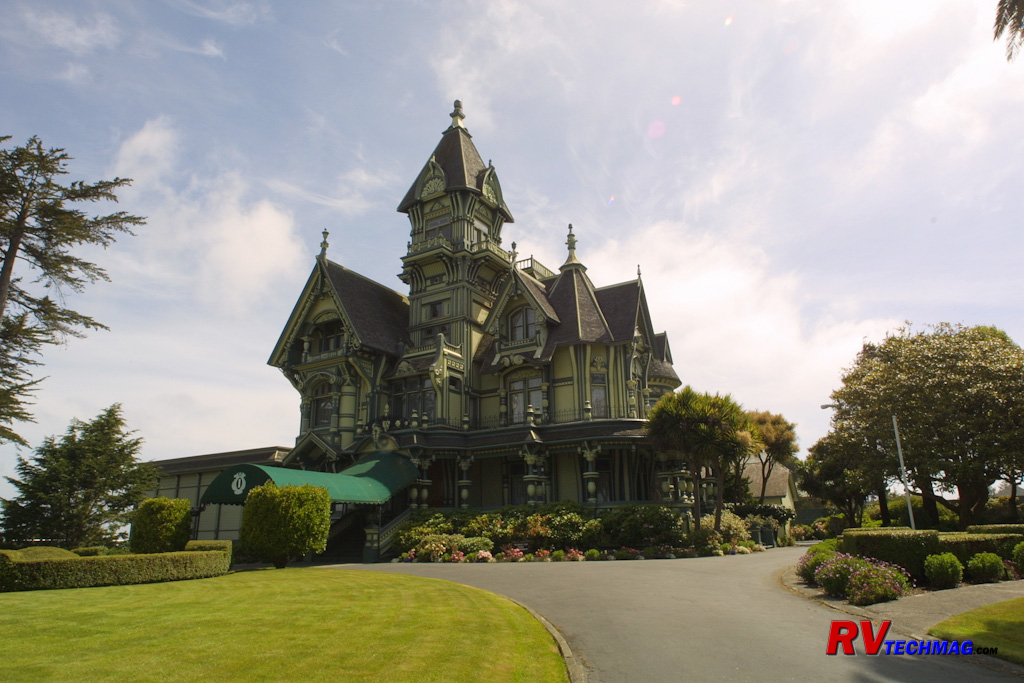
Eureka's Carson Mansion was built in 1884 by William Carson, a local lumber baron. It's considered to be a Victorian masterpiece.
|
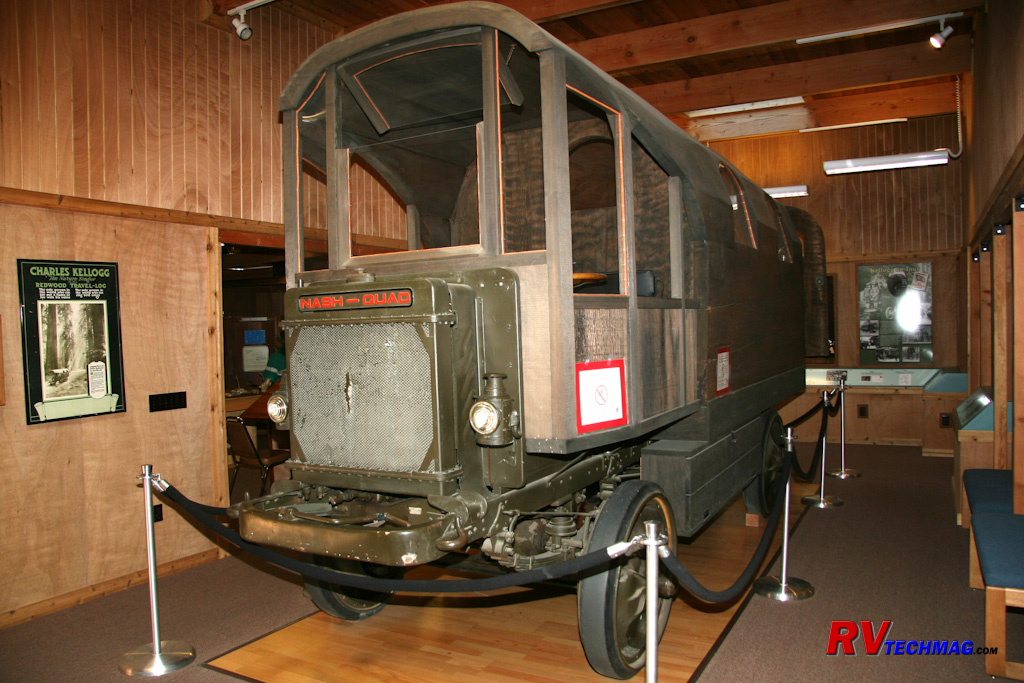
One of the first RVs, built on a 1917 Nash chassis, was carved out of redwood by Charles Kellogg. It's on display at Humboldt Redwoods
State Park.
|
|
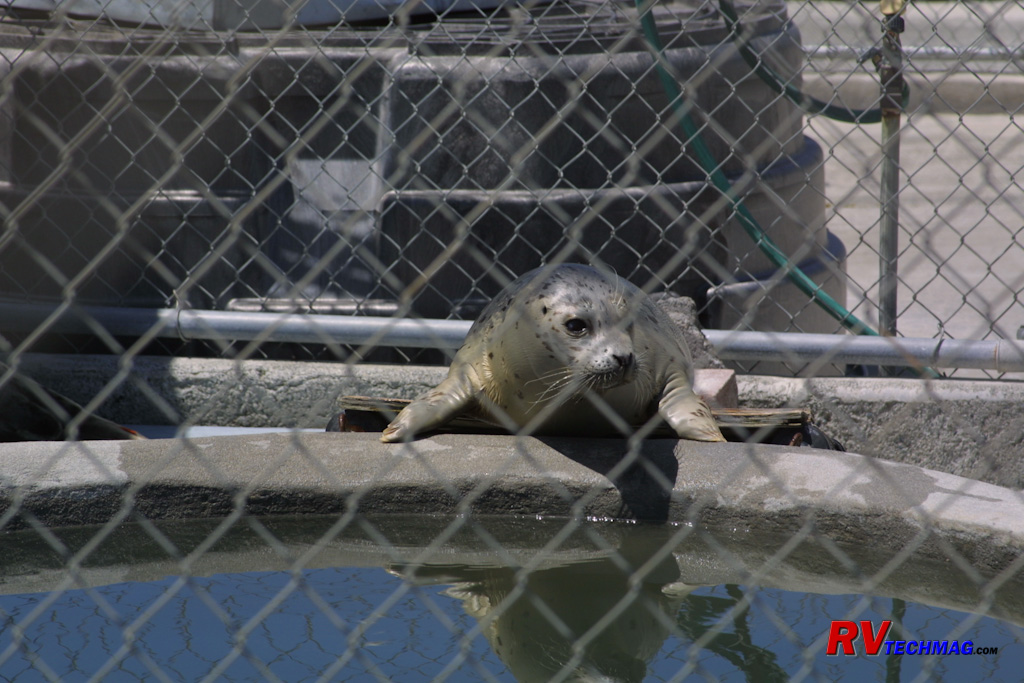
The marine-mammal sanctuary in Crescent City serves as a rescue center for wounded sea mammals.
|
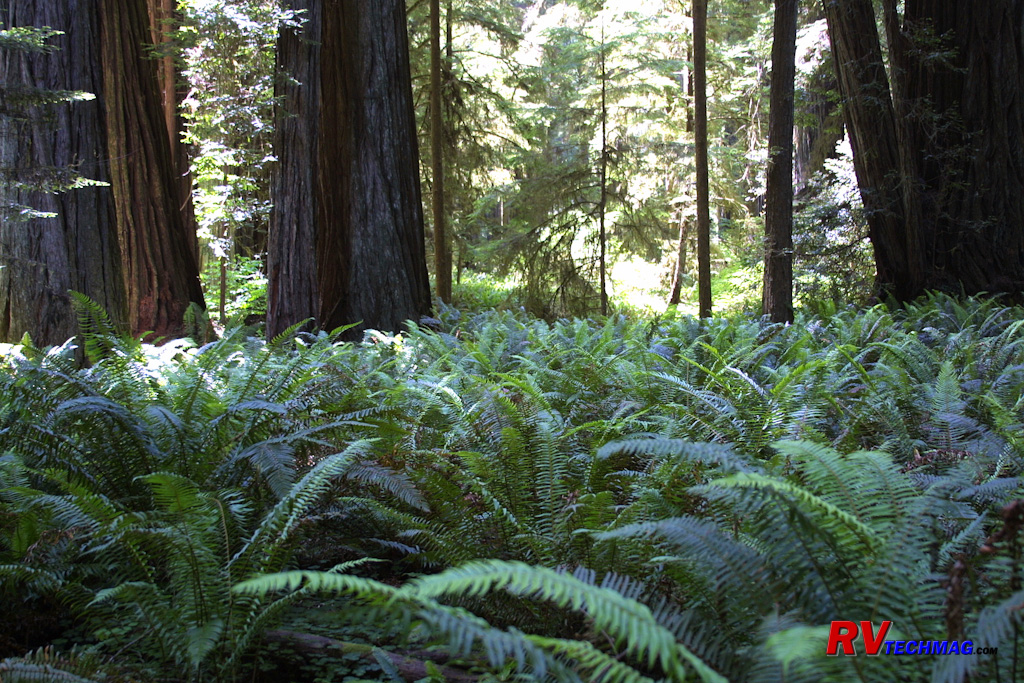
Sword Ferns are common in Jedediah Smith Redwoods State Park. This area was used as a location for the "Star Wars: Return of
the Jedi" movie as the Ewok Village and for the speeder-bike scene.
|
Source
Return to Home Page
If you enjoyed this article be sure to recommend RVtechMag.com to your friends, like us on Facebook or Twitter
or subscribe to our RSS feed.



|





















